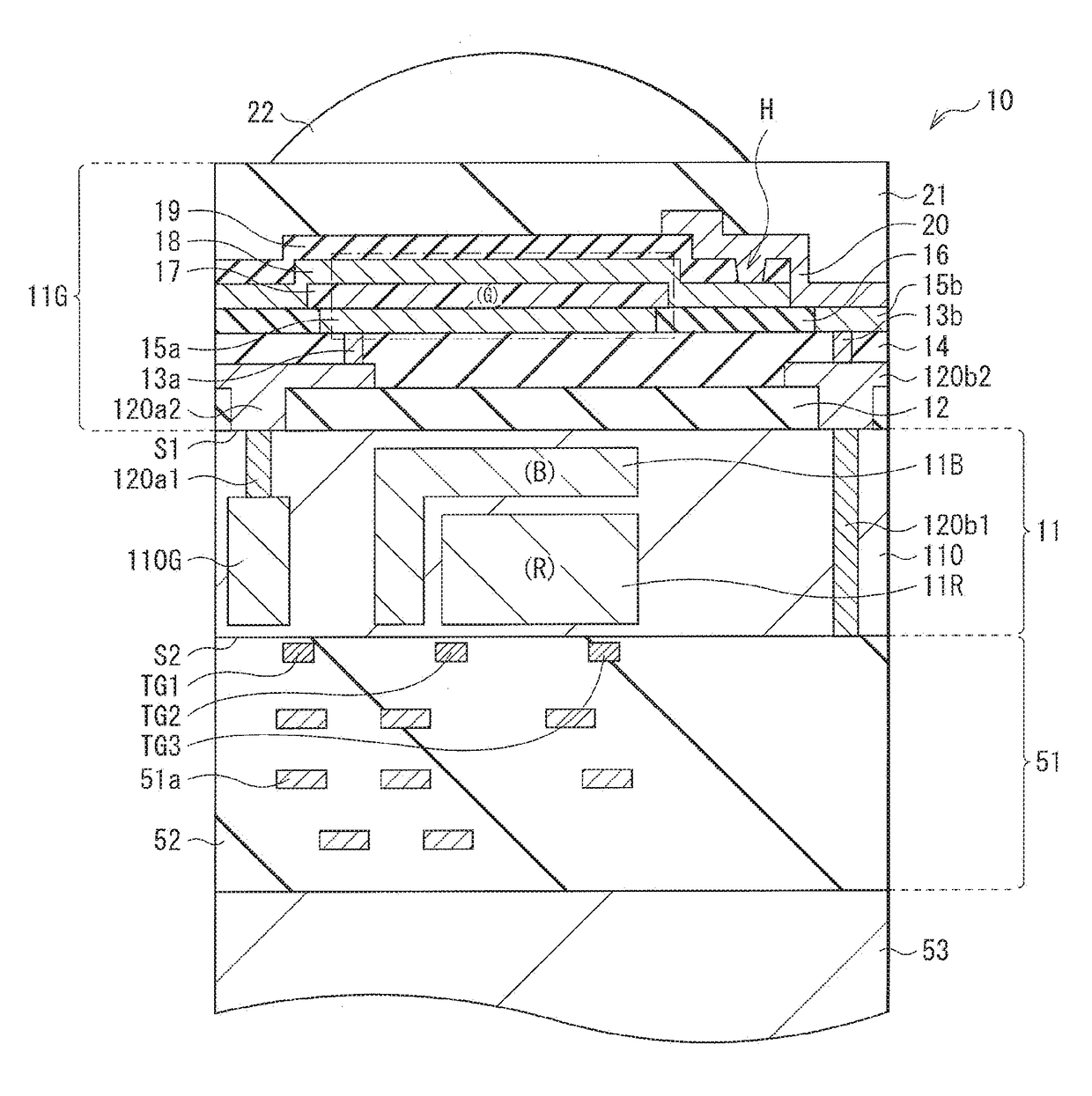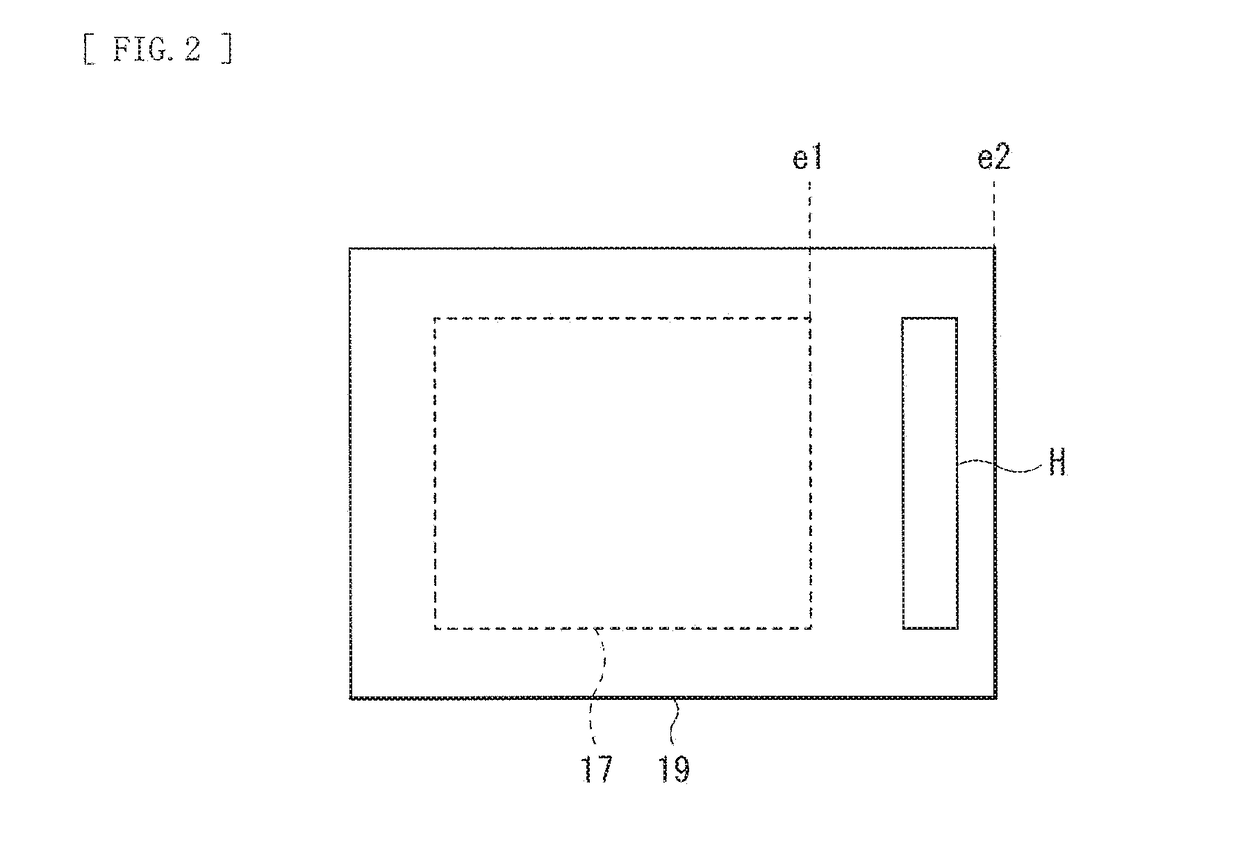Photoelectric conversion element, imaging device, and electronic apparatus
a technology of photoelectric conversion element and imaging device, which is applied in the direction of solid-state devices, semiconductor devices, television systems, etc., can solve the problems of deterioration of wavelength selectivity, difficulty in achieving high wavelength selectivity and high response speed, etc., and achieve high color reproducibility, low noise, and high sensitivity.
- Summary
- Abstract
- Description
- Claims
- Application Information
AI Technical Summary
Benefits of technology
Problems solved by technology
Method used
Image
Examples
modification example (
2. Modification example (example including plurality of organic photoelectric converters)
[0036]2-1. Basic configuration
[0037]2-2. Action and effects
application example
3. Application example
4. Examples
1. EMBODIMENT
[0038]FIG. 1 illustrates a cross-sectional configuration of a photoelectric conversion element (photoelectric conversion element 10) according to an embodiment of the disclosure. For example, the photoelectric conversion element 10 configures one pixel in an imaging device (described later) such as a CCD image sensor and a CMOS image sensor. The photoelectric conversion element 10 includes pixel transistors (including transfer transistors Tr1 to Tr3 described later) and a multilayer wiring layer (multilayer wiring layer 51) on front surface (surface S2 opposite to light receiving surface) side of a semiconductor substrate 11.
[0039]The photoelectric conversion element 10 according to the present embodiment includes a structure in which one organic photoelectric converter 11G and two inorganic photoelectric converters 11B and 11R that selectively detect light of wavelength ranges different from one another to perform photoelectric conversi...
modification example
2. MODIFICATION EXAMPLE
[0095]FIG. 10 illustrates a cross-sectional configuration of a photoelectric conversion element (photoelectric conversion element 30) according to a modification example of the disclosure. The photoelectric conversion element 30 configures, for example, one pixel (e.g., pixel P in FIG. 11 described later) in an imaging unit (e.g., imaging device 1 in FIG. 11 described later) such as a CCD image sensor and a CMOS image sensor. The photoelectric conversion element 30 includes a red photoelectric converter 30R, a green photoelectric converter 30G, and a blue photoelectric converter 30B in this order on the semiconductor substrate 11 with an insulation layer 42 in between.
[0096]In the photoelectric conversion element 30 according to the present modification example, each photoelectric converter 30R (30G or 30B) includes a photoelectric conversion layer 32R (32G or 31G) between a pair of electrodes, a first electrode 31R (31G or 31B) and a second electrode 33R (33G...
PUM
| Property | Measurement | Unit |
|---|---|---|
| absorption coefficient | aaaaa | aaaaa |
| wavelength range | aaaaa | aaaaa |
| wavelength range | aaaaa | aaaaa |
Abstract
Description
Claims
Application Information
 Login to View More
Login to View More - R&D
- Intellectual Property
- Life Sciences
- Materials
- Tech Scout
- Unparalleled Data Quality
- Higher Quality Content
- 60% Fewer Hallucinations
Browse by: Latest US Patents, China's latest patents, Technical Efficacy Thesaurus, Application Domain, Technology Topic, Popular Technical Reports.
© 2025 PatSnap. All rights reserved.Legal|Privacy policy|Modern Slavery Act Transparency Statement|Sitemap|About US| Contact US: help@patsnap.com



